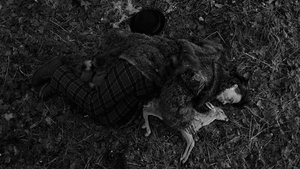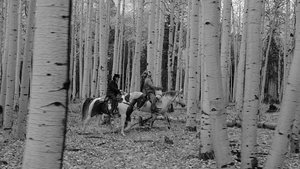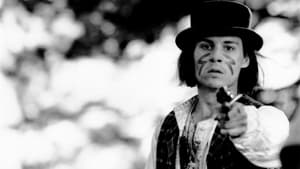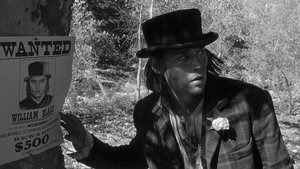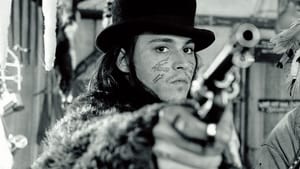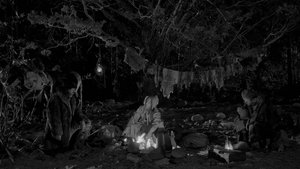Contact: info@alwanfilm.com
Video Sources 0 Views
- Watch trailer
- Dead Man


Synopsis
Table of Contents
ToggleReview: Dead Man 1995 Colorized – A Poetic Journey Through the American Frontier

Introduction
Dead Man 1995, directed by Jim Jarmusch, is a unique blend of Western and existential drama that takes viewers on a surreal journey through the American frontier. In this article, we’ll delve into the film’s distinctive style, its star-studded cast, and the impact of its narrative and visual storytelling. Additionally, we will explore the significance of its early colorization and its place in the annals of film history.
Check The Full Colorized Movies List
Check Our Colorized Movies Trailer Channel
Understanding Dead Man 1995 Colorized: Director, Cast, and Genre
“Dead Man” (1995) is a testament to Jim Jarmusch’s innovative approach to filmmaking. Known for his distinctive style and penchant for offbeat narratives, Jarmusch crafted “Dead Man” as a “psychedelic Western,” blending elements of traditional Westerns with philosophical undertones and surreal imagery.
The film stars Johnny Depp as William Blake, an accountant turned fugitive in the unforgiving wilderness. Depp’s portrayal is hauntingly poignant, capturing the character’s transformation from a passive observer to an active participant in his fate. Supporting Depp is a stellar cast that includes Gary Farmer as Nobody, an outcast Native American who becomes Blake’s guide and protector, and Robert Mitchum in one of his final film roles. The ensemble also features notable performances by Lance Henriksen, Iggy Pop, and Billy Bob Thornton, adding depth and color to the narrative.
Exploring the World of Dead Man 1995 Colorized: Plot and Characters
“Dead Man” (1995) follows the journey of William Blake, an accountant from Cleveland who travels to the frontier town of Machine for a job that no longer exists. After a series of violent encounters, Blake becomes a wanted man, fleeing into the wilderness. There, he meets Nobody, who believes Blake is the reincarnation of the famous English poet William Blake. As they travel together, Blake’s health deteriorates, leading him to confront his own mortality and the violence surrounding him.
The film’s narrative is structured like a series of vignettes, each episode adding layers to Blake’s character and the surreal world he inhabits. The interactions between Blake and the eccentric characters he encounters, such as the cannibalistic bounty hunter Cole Wilson (Lance Henriksen), and the enigmatic Thel (Mili Avital), contribute to the film’s dreamlike quality and philosophical depth.
The Art of Film Colorization
Film colorization is a technique that involves digitally adding color to black and white films. This process, while often controversial, aims to enhance the visual appeal of classic movies and introduce them to new audiences. In the case of “Dead Man” (1995), colorization offers a fresh perspective on its stark and haunting visuals, highlighting the contrast between the natural world and the bleak industrial landscape.
Early Colored Films: A Brief History
The journey of film colorization began in the early 20th century, with filmmakers experimenting with hand-tinting and stencil coloring. The advent of Technicolor in the 1930s revolutionized the industry, allowing for vibrant, full-color films. Over the decades, advancements in technology have refined the process, making colorization more accessible and accurate. Despite the ongoing debate over its artistic merits, colorization remains a valuable tool for preserving and revitalizing classic cinema.
Dead Man 1995 and Its Early Colored Version
The decision to release “Dead Man” (1995) in a colorized format aimed to enhance its visual storytelling and reach a broader audience. While Jarmusch’s original black and white vision emphasizes the film’s existential themes and stark beauty, the colorized version offers a new dimension to the narrative, bringing out the rich textures of the American frontier and the characters’ emotional journeys.
The Debate Over Film Colorization
The debate over film colorization is a contentious one, with purists arguing that it alters the original artistic intent and historical authenticity of black and white films. Advocates, however, contend that colorization can make classic films more accessible and engaging for contemporary audiences. In the case of Dead Man 1995, the colorized version provides a fresh interpretation that can coexist with Jarmusch’s original vision, offering viewers the choice to experience the film in different ways.
Examining Dead Man 1995 as an Early Colored Film
Dead Man 1995 as a colorized film invites viewers to re-examine its themes and visual aesthetics. The colorization enhances the surreal and otherworldly atmosphere, drawing attention to the natural beauty of the landscapes and the symbolic elements within the film. However, the black and white version remains integral to the film’s identity, preserving the stark contrasts and existential tones that define Jarmusch’s work.
Influence and Legacy: Dead Man 1995 Colorized’s Impact on Cinema
Dead Man 1995 has left a lasting impact on the world of cinema, influencing filmmakers with its unconventional narrative structure and existential themes. Jarmusch’s unique vision and the film’s poetic exploration of life, death, and identity have inspired a new generation of directors to push the boundaries of storytelling. The film’s soundtrack, composed by Neil Young, also contributes to its enduring legacy, enhancing the emotional resonance of the narrative.
Director’s Cinematic Legacy: Beyond Dead Man 1995 Colorized
Jim Jarmusch’s cinematic legacy extends far beyond “Dead Man” (1995), with a body of work that includes critically acclaimed films like “Stranger Than Paradise,” “Down by Law,” and “Only Lovers Left Alive.” Known for his minimalist style and focus on character-driven stories, Jarmusch has carved out a distinctive niche in the film industry, earning accolades for his contributions to independent cinema and his ability to blend genres seamlessly.
Themes Explored in Dead Man 1995 Colorized
“Dead Man” (1995) delves into themes of existentialism, mortality, and the quest for identity. Through Blake’s journey, the film explores the duality of life and death, the nature of violence, and the search for meaning in an indifferent universe. The interactions between Blake and Nobody highlight themes of cultural displacement and the clash between different worldviews, adding depth and complexity to the narrative.
Reception and Controversy Surrounding Dead Man 1995 Colorized
Upon its release, “Dead Man” (1995) received mixed reviews from critics, with some praising its originality and philosophical depth, while others found its pacing and unconventional narrative challenging. The colorized version of the film sparked further debate, with purists arguing that it compromised Jarmusch’s artistic vision. However, the film has since gained a cult following and is now regarded as a seminal work in the Western genre and independent cinema.
Where to Watch Dead Man 1995 Colorized Online
For those eager to experience the haunting beauty of “Dead Man” (1995), the film is available on various streaming platforms, including Netflix, Amazon Prime, and Hulu. Both the original black and white version and the colorized edition can be found, allowing viewers to choose their preferred way of experiencing this cinematic masterpiece.
FAQs About Dead Man 1995 Colorized
Q: Is “Dead Man” (1995) based on a true story? A: No, “Dead Man” (1995) is a fictional tale crafted by director Jim Jarmusch. While it draws on historical elements of the American frontier, its characters and narrative are products of the filmmaker’s imagination.
Q: Who are the main actors in “Dead Man” (1995)? A: The film stars Johnny Depp as William Blake, with a supporting cast that includes Gary Farmer, Robert Mitchum, Lance Henriksen, Iggy Pop, and Billy Bob Thornton, among others.
Q: What awards did “Dead Man” (1995) win? A: While “Dead Man” (1995) did not win major awards, it has garnered critical acclaim and a dedicated cult following for its unique storytelling and visual style.
Q: Why was “Dead Man” (1995) released in a colorized format? A: The colorized version of “Dead Man” (1995) was released to offer a fresh perspective on the film and make it more accessible to contemporary audiences accustomed to color films. The decision aimed to enhance the visual experience and highlight the film’s rich textures and landscapes.
Q: What is the significance of the film’s title, “Dead Man”? A: The title “Dead Man” reflects the protagonist’s existential journey and his transformation as he confronts his own mortality. It also alludes to the themes of death and rebirth that permeate the narrative.
Q: How does the soundtrack contribute to the film’s atmosphere? A: Composed by Neil Young, the soundtrack of “Dead Man” is integral to its atmosphere, providing a haunting and evocative musical backdrop that enhances the film’s emotional and existential themes.
Q: What is the critical reception of “Dead Man” (1995) today? A: Today, “Dead Man” (1995) is regarded as a cult classic and a seminal work in the Western genre and independent cinema. It is praised for its originality, philosophical depth, and distinctive visual style.
Conclusion
“Dead Man” (1995) remains a testament to Jim Jarmusch’s visionary filmmaking and the enduring power of cinema to explore profound themes through unconventional narratives. Whether viewed in its original black and white format or the colorized edition, the film captivates audiences with its haunting beauty, thought-provoking themes, and memorable performances.
As we reflect on the legacy of “Dead Man” (1995), let us celebrate its place in the pantheon of great films that challenge our perceptions and invite us to ponder the mysteries of life and death. The film’s journey through the American frontier serves as a metaphor for the human condition, reminding us of the universal quest for meaning and the indomitable spirit of the human soul.
Whether you’re a longtime fan or a newcomer to Jarmusch’s work, “Dead Man” (1995) offers a cinematic experience that transcends time and genre. So, take a moment to immerse yourself in this poetic journey through the American frontier and discover the timeless wisdom and beauty that lies at its heart.
